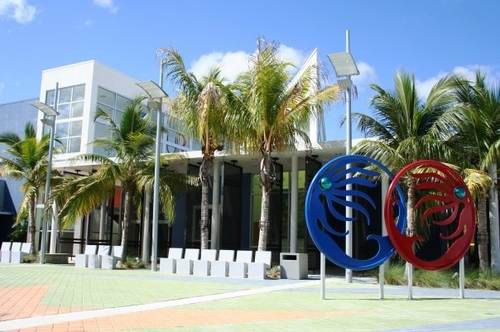
Miami Congratulates Self as Cultural Capital
Yesterday Rocco Landesman came to town. The outspoken head of the NEA toured DASH, Wynwood galleries, and the Little Haiti Cultural Center, before sitting on a panel at the Wolfsonian with local arts leaders to discuss Miami’s status as a “new cultural capital.” He seemed impressed with what he saw, even suggesting in a self-deprecating moment that he was “surprised” to be included on a panel with such arts titans as developer Tony Goldman, banker Adolfo Henriques, and county culture czar Michael Spring. Indeed, Landesman listened more than he talked.
It felt good to see an august visitor take in the accomplishments of Miami’s arts community, to hear the tale of the transformation of Miami Beach and the transformation on the verge in Wynwood and Little Haiti. To realize we’re getting it right when it comes to public and private partnerships. And we’re all still a bit astonished by our success in turning around the County government’s decision to slash funding for the arts. Every one of the panelists has done much to make us proud.
Yet there was a troubling question introduced by curator and audience member Donna Marie Baptiste: what has all this hoopla about art done for the residents of Wynwood and Little Haiti? Michael Spring had a thoughtful answer — what hasn’t he thought of? — but the unfinished business remains.
And at the swank reception that followed in the museum lobby (real glasses! upscale tostones and croquetas!), there were more questions that no one dared ask in the public forum.
“The message did not match the face of Miami,” observed a Caribbean woman gallerist with a long history in the community.
“What about the artists?” asked an equally accomplished woman artist and gallerist from a second Caribbean nation.
Indeed, of the six local panelists, only one was a woman, and only one (two-for-one) — Edouard Duval Carrie — was 1) an artist and 2) a person of color.
Each individual panelist has played a remarkable role in shaping our community. There’s not one I would suggest should not have been there. Yet the questions must be asked: whose culture does our leadership represent? And who does our local art work for?
See my Flip video of the panel here.